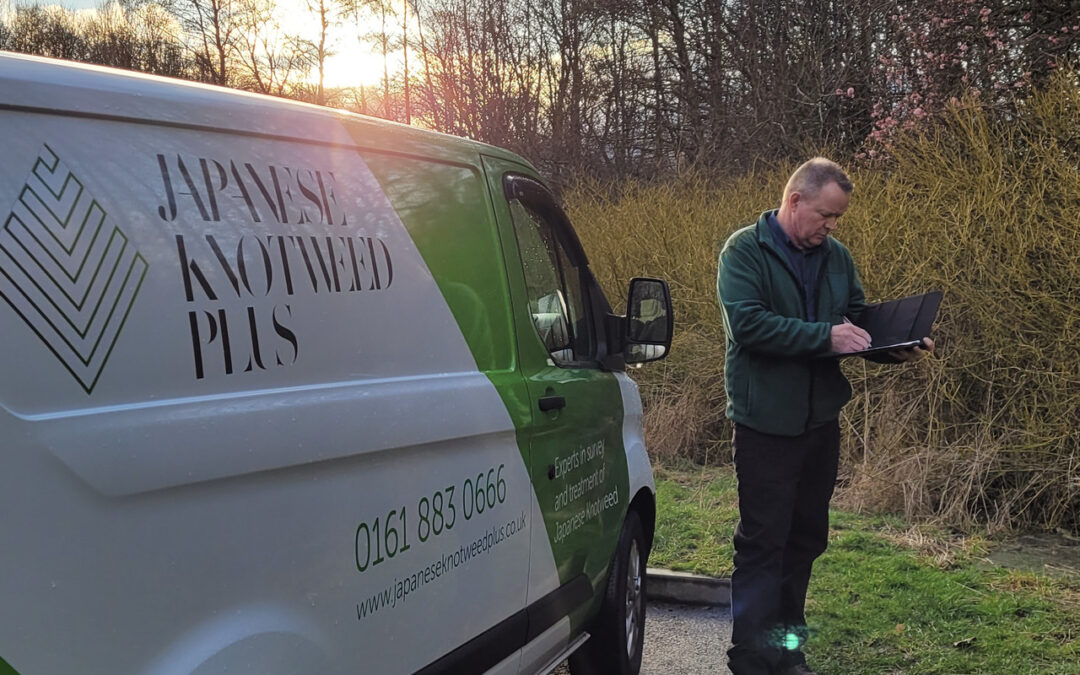Want to control Japanese Knotweed without breaking the bank
Check out these cost-effective approaches for managing invasive species.
Japanese Knotweed is a highly invasive plant species that can cause significant damage to property, infrastructure, and natural ecosystems. Its roots can grow deep and wide, disrupting drainage systems and causing cracks in concrete and brickwork. As a result, it’s essential to control the spread of this plant to prevent further damage.
However, controlling Japanese Knotweed can be an expensive endeavour, especially for homeowners or small business owners on a budget. The good news is that there are several cost-effective approaches you can use to manage Japanese Knotweed without breaking the bank. In this article, we’ll explore some of the most effective approaches for Japanese Knotweed control on a budget.
Approaches for Japanese Knotweed Control on a Budget:
-
Hand Digging:
Hand digging is a labor-intensive method of Japanese Knotweed control, but it’s also the most cost-effective. This approach involves digging out the plant’s rhizome system entirely, including all of the roots and underground stems. While this method can be time-consuming, it’s can be an effective way to control a small infestations of Japanese Knotweed. Its always best to get a professional company to remove Japanese knotweed.
-
Chemical Control:
Chemical control is another effective approach for managing Japanese Knotweed on a budget. This approach involves applying herbicides to the plant, which will kill the leaves and stems, ultimately leading to the death of the entire plant. Glyphosate-based herbicides are the most commonly used chemical control method for Japanese Knotweed, but other herbicides may also be effective.
Herbicides should only be applied by professionals that are qualified to use them.
-
Cut and Cover:
Cut and cover is an approach that involves cutting the plant down to ground level and covering the area with a material that blocks sunlight. This method prevents the plant from photosynthesizing, ultimately leading to its death. The material used for cover can vary, but some options include black plastic, landscape fabric, or even old carpet.
-
Grazing Animals:
Grazing animals, such as goats and sheep, can be effective at controlling Japanese Knotweed on a budget. These animals will eat the plant, ultimately preventing it from growing and spreading. However, it’s essential to ensure that the animals are contained and cannot escape, as they may cause damage to surrounding property or natural ecosystems.
FAQs:
- Is Japanese Knotweed dangerous?
- Japanese Knotweed is not dangerous to humans, but it can cause significant damage to property, infrastructure, and natural ecosystems.
- Can I control Japanese Knotweed on my own?
- Yes, you can control Japanese Knotweed on your own, but it may be more effective to hire a professional if you have a large infestation or are unsure of how to manage the plant.
- How do I dispose of Japanese Knotweed?
- Japanese Knotweed is considered a controlled waste, and it must be disposed of properly. You should contact your local council or waste management authority to find out how to dispose of the plant in your area.
Conclusion:
Japanese Knotweed is a highly invasive plant species that can cause significant damage to property, infrastructure, and natural ecosystems. However, there are several cost-effective approaches you can use to manage this plant without breaking the bank. Whether you choose to hand dig, use chemical control, cut and cover, or employ grazing animals, it’s essential to take action to prevent the spread of Japanese Knotweed. By using these approaches, you can effectively control this invasive species on a budget and protect your property and natural environment.
